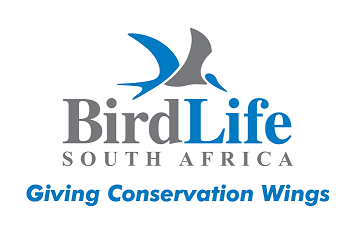Blue Korhaan (Eupodotis caerulescens)
CAR summary data
Habitat and noted behaviour
Sightings per Kilometre
Please note: The below charts indicate the sightings of individuals along routes where the species has occured, and NOT across all routes surveyed through the CAR project.
Regional Status


IUCN Data (Global)
IUCN 2024. IUCN Red List of Threatened Species. Version 2024-1 (www)Assessment year: 2017
Assessment Citation
BirdLife International 2017. Eupodotis caerulescens. The IUCN Red List of Threatened Species 2017: e.T22692000A118449147. Accessed on 09 December 2025.Geographic range:
Eupodotis caerulescens is virtually endemic to South Africa, extending only marginally into western Lesotho. The total South African population has been estimated at 1,500-5,000 individuals, but this may be an underestimate as the population in the former Transvaal alone has been estimated to exceed 10,000 individuals, with between 1,000 and 3,000 in the proposed Grassland Biosphere Reserve centred around Volksrust and Wakkerstroom.Habitats:
It is found on high grassveld, usually above 1,500 m (del Hoyo et al. 1996), where it inhabits open, fairly short grassland and a mixture of grassland and karoo dwarf-shrubland within 1km of water, with termite mounds and few or no trees (del Hoyo et al. 1996, Taylor et al. 2015). It also inhabits old and fallow cropland, pastures and winter cultivation (del Hoyo et al. 1996). It feeds on insects, scorpions, small lizards and vegetable matter. It apparently benefits from small-scale agriculture, as it regularly forages in crop fields and planted pastures. Breeding occurs from August to April, mainly in October and November (del Hoyo et al. 1996). The nest is situated on bare open ground, often in short, thick grass or cropland (del Hoyo et al. 1996). The clutch-size ranges from one to three eggs, and the incubation period is 24-28 days (del Hoyo et al. 1996). The young stay with their parents for up to two years, in a breeding system that appears to involve group-territorialism (del Hoyo et al. 1996).Population:
The population is estimated to number 12,000-15,000 individuals in total, roughly equivalent to 8,000-10,000 mature individuals.Threats:
It does not appear to have decreased in the west of its range, but seems certain to have decreased to some extent in the east owing to dense human settlement, large-scale agriculture and afforestation (Taylor et al. 2015). Habitat loss looks set to continue throughout its range (Barnes 2000), with intensive agriculture appearing to be the main threat (del Hoyo et al. 1996).Conservation measures:
Conservation Actions UnderwayCITES Appendix II. It occurs in at least 15 nature reserves in South Africa, but these sites may protect only 100-500 individuals (Harrison et al. 1997a). Conservation Actions Proposed
Carefully monitor its populations (Barnes 2000). Monitor rates of habitat loss within its range. Protect additional areas of the species's habitat.
 Login
Login


